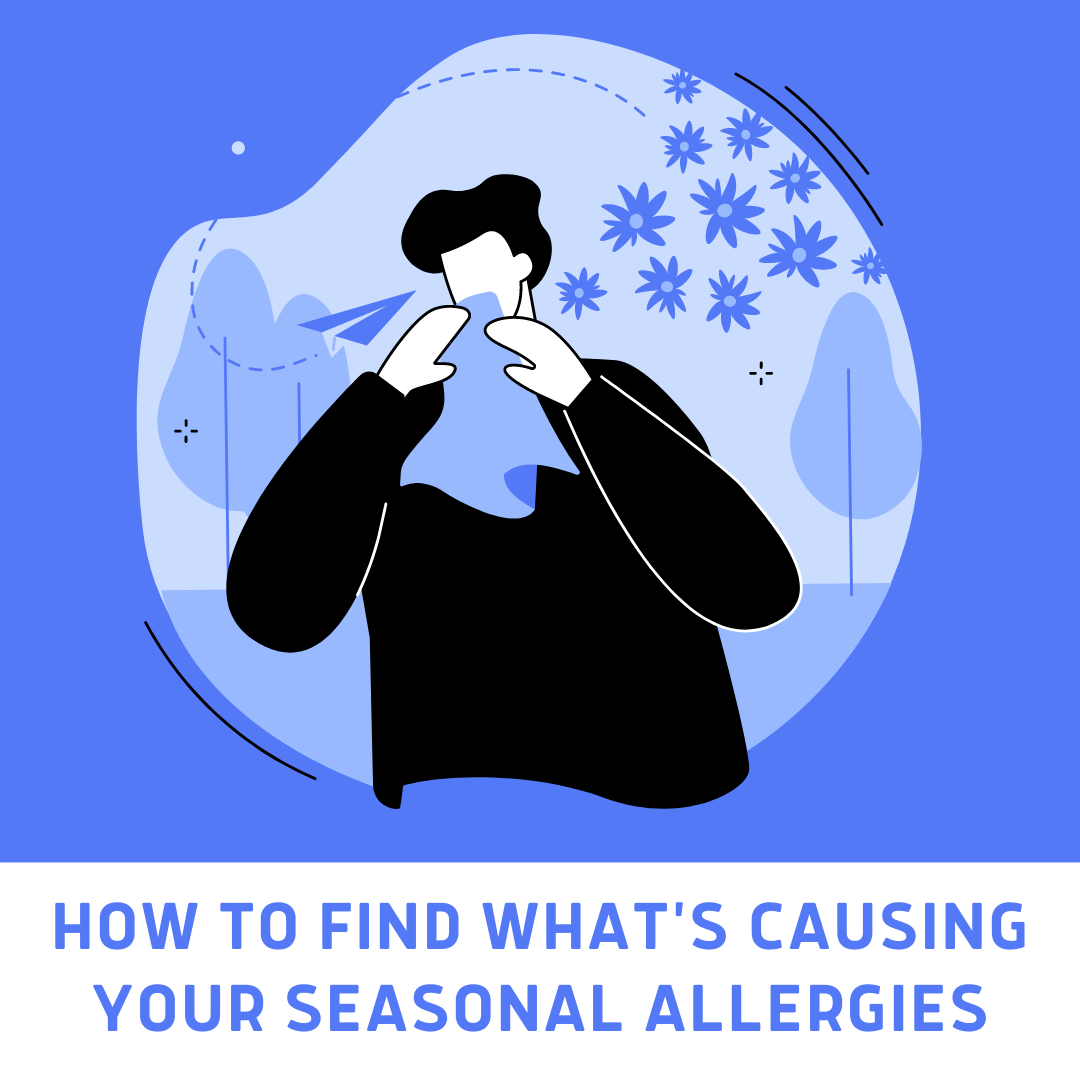If you’ve ever experienced allergy symptoms such as sneezing, nasal congestion, itchy, red and teary eyes or sinus headaches, you’ve probably wondered “what the heck am I allergic to?” Allergies can be a complex health issue with many allergy seasons overlapping. Most people know that during the Spring, pollen from weeds, grasses and trees is in overdrive and causes hay fever. Unfortunately, springtime isn’t the only allergy season for most people. If you’ve lived in Texas, you or loved ones have probably experienced allergies during the winter months as well.

What causes seasonal allergies?
According to the Asthma and Allergy Foundation of America, each plant has a particular time of year when they “release tiny pollen grains to fertilize other plants of the same species.” When we’re exposed to pollen, our bodies absorb it through our eyes, nose and lungs and create a histamine reaction causing allergy symptoms. Thankfully, most flowering plants that use insects to spread their pollen do not cause allergy symptoms!
Which plants cause allergies?
Central Texas is one of the allergy hot spots in the United States. There are a multitude of trees, grasses and weeds, as well as dust and mold, that can lead to pollen allergies. We’re unlucky enough to have peak seasons of allergens throughout the year. So what’s active when? We’ve made a handy chart to help you track when the active and peak seasons of each allergen appear.

How to narrow down what's causing your allergies
Here are a few simple tools to find out what's causing your seasonal allergies.
Local News & Pollen.com
Local news pollen counts and Pollen.com can give you an idea of what’s in the air for the day and how high the counts are. This is a simple way to get an idea of which pollen is active and track your symptoms when certain allergens are high versus low.
AAAAI
The American Academy of Allergy, Asthma & Immunology offers a map with pollen counter stations throughout the US. Using their free sign-up, you can receive daily emails with pollen counts or check their website for the stations nearest you. Each counter station may offer different findings depending on their location and frequency of checking the counts. By visiting each station’s dashboard, you’re able to narrow down exactly which species of tree, weed, grass and mold are in the air.
Pollen Wise
The Pollen Wise app offers Allergen Indexes on Dust, Grass, Mold, Trees, and Weeds/Shrubs that includes a forecast for the day so you know when to avoid going outside. It also offers an Allergy Journal so you can track your symptoms to see which allergens are high when your symptoms are acting up. In addition, they have solutions from allergy experts to help you control your symptoms.
Texas Pollen Counts
If you're looking for the pollen counts in Austin, Dallas, Houston, San Antonio or Waco, check out our Texas Pollen Count updated weekdays with recommended products.
By taking a few minutes each day to see which allergens are high, you can become more familiar with which pollen your body is more sensitive to. Add checking the pollen counts to your daily routine, such as while drinking coffee or before getting dressed, to make it easier to remember.
Natural Allergy Relief
If you’re looking for natural allergy relief, we designed our products with the different Texas pollen seasons in mind. Cedar X® and Cedar X Formula work best for mountain cedar/juniper between November and February. Seasonal Allergy Formula works best for Oak, Pecan, Hackberry, Grasses, Mesquite, Ragweed, Pigweed and Dust mites between February and November. Mold Relief and Mold Relief Formula work best for mold allergies year-round. It's safe to use our homeopathic products together when multiple allergens are present. If using both Cedar X® and Mold Relief topical oil blends, we recommend waiting an hour between applying each product.



